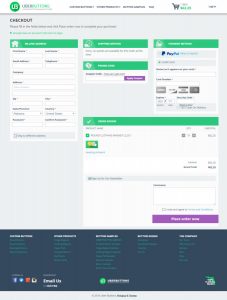
When it comes to training future leaders, it’s important to use multiple approaches. The average attention span is shorter than it was even a decade ago, and employees have come to expect training to be on their terms.
This is especially true among Millennials, who have grown up with technology and the age of “smart” everything. Using a blended approach to learning also makes good business sense. A typical two-day training workshop could cost as much as $ 1,000 per employee when travel, meals and lodging are factored in, while the same material can be covered online for as little as $ 30 per course.
Cost shouldn’t be the only factor to consider, however. Above all, it’s important to choose a training format that is best suited to the topic and the audience.
Here’s a quick look at the most common types of leadership training and when to use them.
Face-To-Face Learning
The most traditional approach to learning is probably what many of us have been accustomed to using, and it still has several advantages. It’s easier to check the pulse of participants and keep them engaged when you can see them. In-person training is also ideal for learning that benefit from practice, an opportunity to respond to a “live” person in a realistic setting and getting immediate feedback, such as role-playing scenarios.
Virtual Instructor-Led Online Learning
When face-to-face learning isn’t practical or cost effective, virtual instructor-led online learning is the next best thing. These are webinars that are led by a live training professional and leverage technology to replicate the characteristics of a face-to-face classroom. This type of learning can be highly interactive and uses video, chat/instant messaging, real-time polls and Q & A sessions to maintain high levels of learner attention and engagement.
Virtual Simulations
Simulations work well for topics that require participants to make situational judgment calls but do not require face-to-face interaction. One example is OnPoint’s Leading From a Distance simulation, which takes leaders through a variety of real-life scenarios where they must assess a situation and make decisions to solve problems and keep their team on track.
Self-Directed e-Learning Programs
This format offers the ultimate flexibility; participants can take courses at their own pace when it’s most convenient for them. Self-directed e-learning programs work well for global organizations that face time zone challenges and for topics that can be learned through reading and written application exercises.
Self Assessments
Self-assessments allow participants to reflect on their own style and preferences and identify their strengths and weaknesses. This learning format is a good supplement for other types of training and can serve as pre-work before a session and/or “homework” between sessions.
Action Learning
Action learning requires a team of participants to tackle a project or identify a solution to a real problem within the company. The team might be tasked with identifying opportunities for improvements to an existing process or researching the cause of a business issue and making recommendations.
While all of these approaches tend to be more formal ways to learn, learning can also be less structured and opportunistic. For instance, you can share articles with team members using an internal forum or collaborative software. During team meetings, you can also invite people to share something they’ve learned with the rest of the team.
Business & Finance Articles on Business 2 Community
(23)










